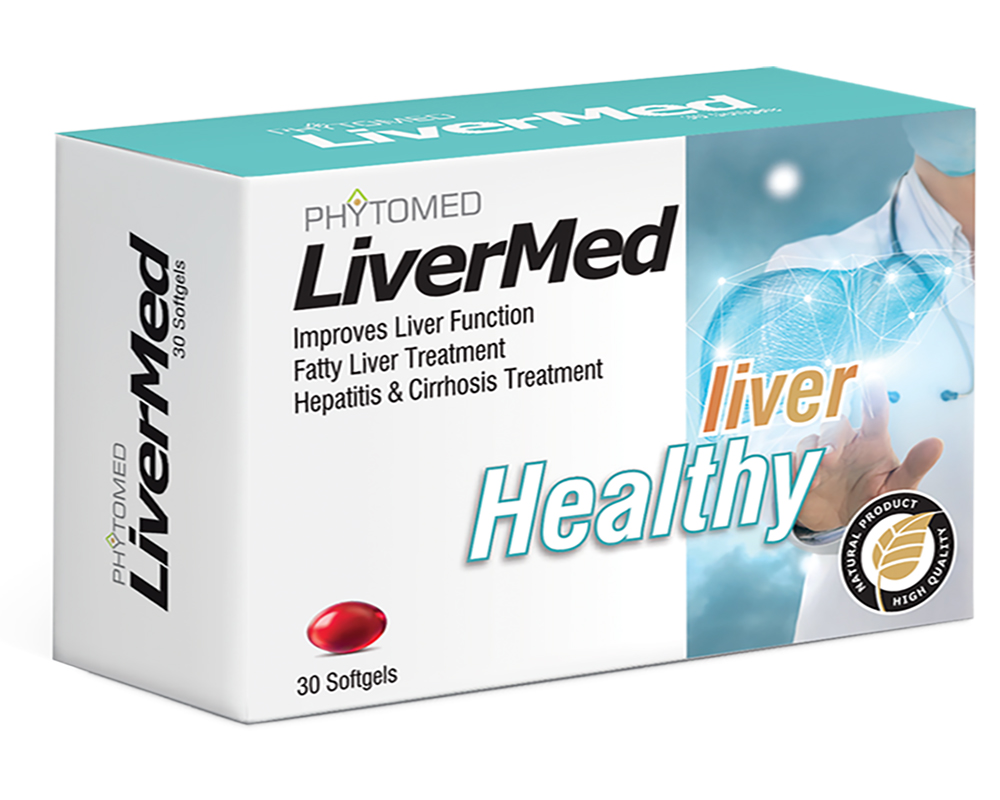Conducted Researches
In a randomized, placebo-controlled clinical trial over two months, 43 patients with alcohol-induced liver disease were treated with 420 mg/day of silymarin. The results showed statistically significant reduction in ALT, AST, bilirubin and prothrombin in the blood. It has been indicated that clinical symptoms such as weakness, anorexia, and nausea improved under silymarin treatment.1
In another trial with 97 patients over a period of one month, which was performed as a randomized versus placebo-controlled, patients with acute alcoholic liver disease treated with silymarin showed a greater decrease of liver transaminase levels compared with the controlled group.2
In another clinical trial, the effect of silymarin in patients with liver disease was evaluated. In this trial, 36 patients were treated with 140 mg silymarin, three times a day. In this study, both ALT and AST levels were normalized. γ-GT and procollagen levels decreased in the silymarin treated group and an improvement of liver function was clinically detectable.3
A double blind clinical trial in patients with chronic alcoholic liver disease also showed that 6 months of silymarin treatment significantly restored the antioxidant defense system, which could be explained by the following reasons: enhancement of superoxide dismutase activity in both erythrocyte and lymphocyte, increased serum level of free-SH group, and glutathione peroxidase activity.4
In a randomized controlled study, 30 cases of insulin-treated diabetics with alcoholic cirrhosis received 600 mg/day of silymarin plus standard therapy. The aim of this study was to observe whether long-term treatment with silymarin is effective in reducing lipoperoxidation and insulin resistance in diabetic cases with cirrhosis. It has been demonstrated that treatment with silymarin could reduce the lipoperoxidation of cell membranes and insulin resistance, significantly decreasing endogenous insulin overproduction and the need for exogenous insulin administration.5
In an open, controlled study, cases with fatty liver were treated with silymarin as a dietary adjunct and a control group for 3 months. Two indexes including HSI and LAP had been studied. The results showed a significant improvement in both indexes with improvement in biometric parameters in the group receiving the silymarin supplement compared with the other group. It has been shown that the use of a Silymarin-based nutraceutical as a dietary adjunct with potent antioxidant effects favors the efficacy of the dietary regimen alone and could possibly improve the subjects’ motivation to sustain such lifestyle changes over time.6
Another clinical trial was performed in 64 cases with NASH who were randomly divided into two groups; 33 in case group and 31 in control group. Cases confirmed by ultrasound with an increase in both AST and ALT levels, more than 1.2 times of the upper normal limit of serum enzymes level within the last six months, meet the inclusion criteria. Patients were asked to take a low-carb, low-fat diet to lose weight up to 4 Kg. Patients in the case group were treated with 210 mg/day silymarin orally for 8 weeks and those in the control group received placebo. After 8 weeks, the cases were monitored and both AST and ALT levels were measured. The results, were presented in Table 1, indicated that silymarin could be effective in decline of hepatic enzymes particularly ALT in cases with NASH.7
Table 1. Serum concentrations of AST and ALT, before and after the study in case and control groups (mean±SD)
In another study, the rats fed on high cholesterol diet revealed significant increase in serum total cholesterol, Triglycerides, LDL-C and VLDL-C. Treatment with Silybin significantly reduced serum total cholesterol by 24%, Triglycerides by 21%, and LDL-C by 24% in a dose dependent manner. Rats treated with Silybin at doses of 300 and 600 mg/kg indicated significant increase in hepatic HDL-C and decrease in other lipid profiles. Thus, treatment with Silybin could significantly reduce both serum and hepatic total cholesterol, triglycerides, VLDL-C, LDL-C and increase HDL-C at both doses.8
Reference
- Hellerbrand, C., Schattenberg, J. M., Peterburs, P., Lechner, A. & Brignoli, R. The potential of silymarin for the treatment of hepatic disorders. Clin. Phytoscience 2, 7 (2016).
- Salmi, H. A. & Sarna, S. Effect of Silymarin on Chemical, Functional, and Morphological Alterations of the Liver. Scand. J. Gastroenterol. 17, 517–521 (1982).
- Fehér, J. et al. Silymarin kezelés májvédö hatása idült alkoholos májbetegségben. Orvosi hetilap vol. 130 2723–2727 (1989).
- Müzes, G. et al. [Effect of silimarin (Legalon) therapy on the antioxidant defense mechanism and lipid peroxidation in alcoholic liver disease (double blind protocol)]. Orv. Hetil. 131, 863–866 (1990).
- Velussi, M. et al. Long-term (12 months) treatment with an anti-oxidant drug (silymarin) is effective on hyperinsulinemia, exogenous insulin need and malondialdehyde levels in cirrhotic diabetic patients. J. Hepatol. 26, 871–879 (1997).
- Sorrentino, G., Crispino, P., Coppola, D. & De Stefano, G. Efficacy of Lifestyle Changes in Subjects with Non-Alcoholic Liver Steatosis and Metabolic Syndrome May Be Improved with an Antioxidant Nutraceutical: A Controlled Clinical Study. Drugs R D 15, 21–25 (2015).
- Hassan Solhi , Ramin Ghahremani , Amir Mohammad Kazemifar , Zahra Hoseini Yazdi. Silymarin in treatment of non-alcoholic steatohepatitis: A randomized clinical trial. Caspian J Intern Med. 5(1):9-12 (2014).
- Gobalakrishnan S, Santhakumari Asirvatham S, Janarthanam V. Effect of Silybin on Lipid Profile in Hypercholesterolaemic Rats. Journal of Clinical and Diagnostic Research. 10(4): 01-05 (2016).


